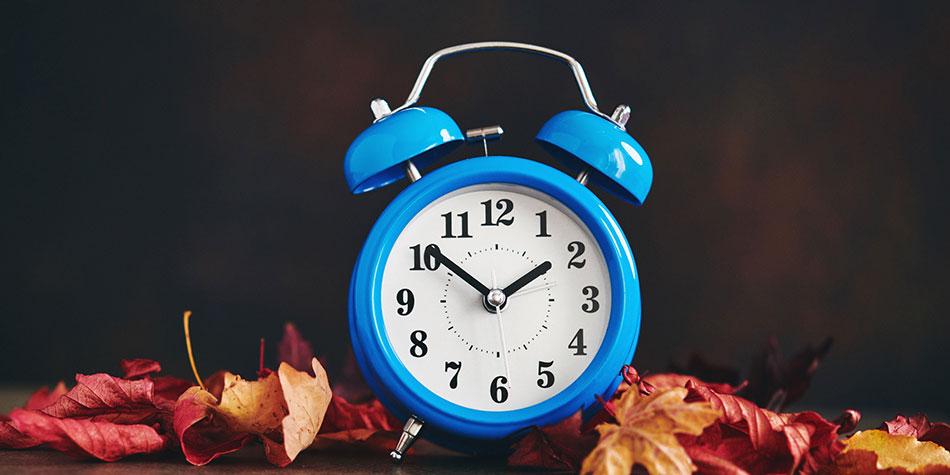
Daylight saving time (DST) ends on November 3 this year.
Adopted in the U.S. in 1918 as a way to save energy during World War I, the practice gives us one extra hour of daylight at the end of the working day March through November. But it also comes with a few disadvantages—notably to our health.
Daylight saving time health effects in the spring
For most of us, the health effects of daylight saving time are more noticeable when it begins in the spring. That’s because, whether you’re a good sleeper or not, it’s hard to lose an hour of sleep even if it is just for just one night.
This sleep loss makes for a tough few days while your body adjusts to the time change. A few studies have even found a link between sleep loss and a rise in the number of heart attacks in the hours after DST begins.
Note: While this increased risk of heart attack can apply to anyone, it mostly affects people with heart disease, diabetes or another heart attack risk factor.
Health effects when daylight saving time ends
When daylight saving time ends, we gain an hour of sleep.
While it makes sense to think an extra hour of sleep is good, this isn’t always true. Both the beginning and ending of DST affect our circadian rhythm and sleep-wake cycle, and this can disturb our sleep for up to one week after the time changes according to one expert review.
Instead of getting an extra hour of sleep in the fall when DST ends, many people struggle to fall asleep on time, wake up often during the night, and wake too early for days after the time changes.
The end of DST has also been linked to an increase in the number of fatal pedestrian and vehicle crashes.This is because it suddenly gets darker sooner in the evening when traffic is at its heaviest.
And if you struggle with seasonal affective disorder, this abrupt elimination of an hour of daylight in the evening can exacerbate your symptoms. To boost your mood, look for ways to get out in the sunlight in the days after to help your circadian rhythm adjust and regulate melatonin and serotonin production.
Tips to get through the time change
The good news about the health effects of daylight saving time is they are temporary. Once your body regulates, you’ll be back to normal.
However, there are things you can do to ease your sleep troubles. Experts from the National Sleep Foundation offer these tips, which you can apply to both the time change in the spring and the fall:
- Go to bed 15 to 20 minutes earlier in the days leading up to the time change.
- If you can’t get to bed early in the days before, go to bed at least 30 minutes early the night of the time change.
- If you can, sleep in for at least an extra 30 minutes on the morning the time changes.
- https://ajph.aphapublications.org/doi/pdf/10.2105/AJPH.85.1.92
- https://www.health.harvard.edu/blog/daylight-saving-time-fall-back-doesnt-equal-sleep-gain-201311016836
- https://www.sciencedirect.com/science/article/pii/S1087079212001141
- https://www.heart.org/en/news/2018/10/26/can-daylight-saving-time-hurt-the-heart-prepare-now-for-spring
- https://www.psychologytoday.com/us/blog/two-takes-depression/201811/daylight-saving-time-and-depression
- https://www.nimh.nih.gov/health/topics/seasonal-affective-disorder/index.shtml
- https://news.nationalgeographic.com/2018/03/daylight-savings-time-arizona-florida-spring-forward-science/
- https://www.sleepfoundation.org/articles/reason-daylight-savings-time-can-give-you-jet-lag
$webqFacilityNumber
Need a Physician?